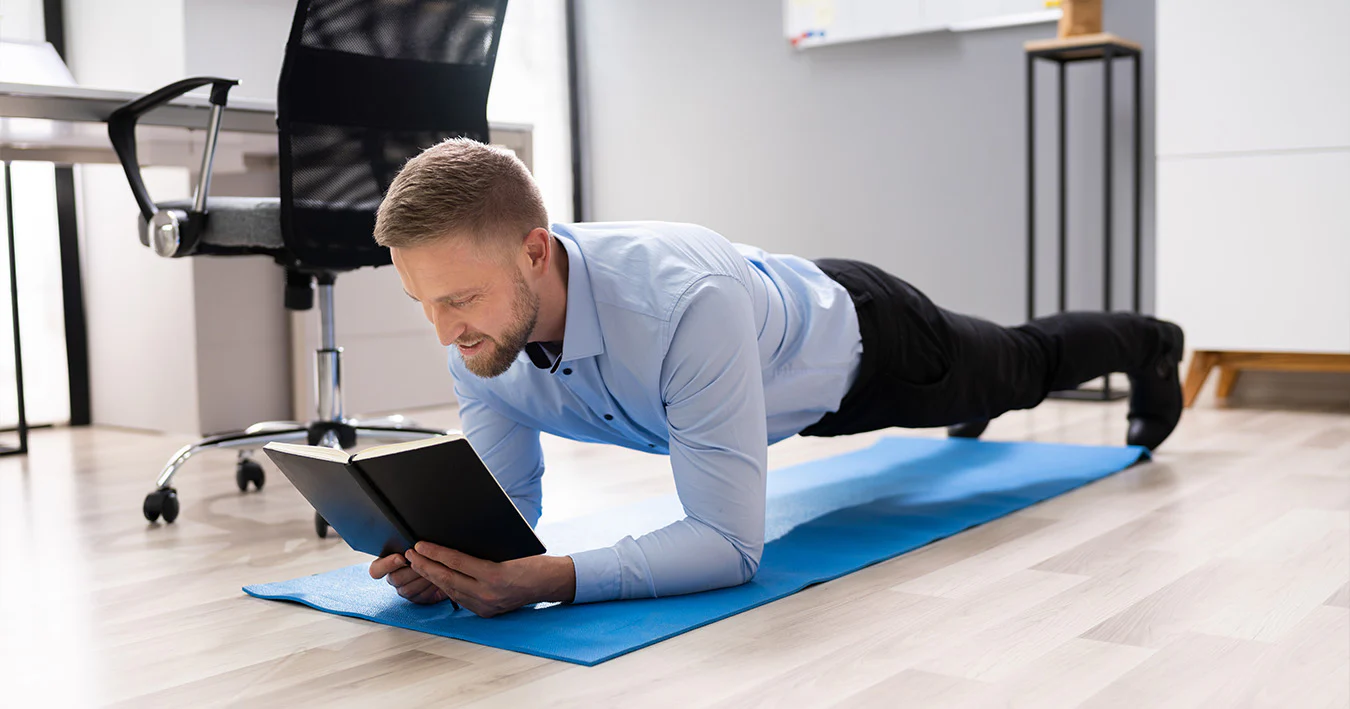
For busy professionals, squeezing in fitness often feels like another task on an already packed schedule. Between meetings, deadlines, and family time, it can be easy to push workouts aside. But staying fit doesn’t require hours in the gym—what it really needs is consistency, smart planning, and a strategy that works with your lifestyle, not against it.
Here’s how you can stay on top of your fitness goals without sacrificing your productivity or peace of mind.
1. Shift Your Mindset: Quality Over Quantity
Long workouts are not the only path to results. In fact, short, focused sessions can be just as effective when done with intention.
- A 20-minute full-body circuit can burn calories and build strength
- Three focused 30-minute workouts per week can maintain fitness
- Aim to move daily—even if it’s just a brisk walk or stretching
2. Schedule Workouts Like Meetings
If it’s not on your calendar, it probably won’t happen. Treat workouts like any important appointment.
- Block out specific times in your day—early morning, lunch break, or evening
- Even 15–20 minutes can make a difference when done consistently
- Consider walking meetings or standing desks to stay active at work
3. Embrace Time-Efficient Training Styles
Short on time? These formats are built for efficiency:
High-Intensity Interval Training (HIIT):
- Alternates short bursts of effort with rest
- Burns fat, boosts cardiovascular health, and takes just 20–30 minutes
- Example: 30 seconds of jump squats, 30 seconds rest—repeat for 20 minutes
Circuit Training:
- Combines strength and cardio
- Keeps your heart rate up and targets multiple muscle groups
- Minimal rest between exercises means a high-calorie burn
Supersets and Tri-Sets:
- Perform two or three exercises back-to-back with no rest
- Cuts gym time in half without reducing effectiveness
4. Prioritize Compound Movements
Choose exercises that work multiple muscles at once for better efficiency:
- Squats
- Deadlifts
- Push-ups
- Pull-ups
- Rows
- Overhead presses
These not only save time but build more strength and burn more calories than isolation exercises.
5. Work Out at Home or On the Go
Gym not required. Keep it simple with:
- A yoga mat, resistance bands, and a pair of dumbbells
- Bodyweight workouts: push-ups, planks, burpees, air squats
- Fitness apps or YouTube channels with guided routines
- Jump rope or stair workouts for quick cardio sessions
6. Optimize Your Morning Routine
Starting your day with movement can boost energy, focus, and metabolism:
- Wake up 30 minutes earlier and fit in a home workout
- Try a 15-minute yoga or stretch session to start the day
- Walking or cycling to work also counts as fitness
7. Focus on Consistency, Not Perfection
Some weeks will be busier than others, and that’s okay. The goal isn’t to train like an athlete—it's to stay active consistently.
- 2–3 solid workouts a week still deliver great results
- Even 10 minutes of movement is better than none
- Let go of “all-or-nothing” thinking—it leads to burnout
8. Combine Social and Fitness Time
Kill two birds with one stone:
- Join a local fitness class with a friend
- Schedule family hikes or bike rides
- Do walking catch-ups instead of coffee meetups
9. Use Technology for Support
- Set workout reminders on your phone or smartwatch
- Use fitness tracking apps to stay accountable
- Follow quick workouts via mobile apps or streaming services
- Track your steps, calories, and heart rate to stay motivated
10. Don’t Neglect Recovery and Nutrition
Busy doesn’t mean burning out.
- Prioritize 7–9 hours of sleep
- Keep healthy snacks and meals prepped
- Stay hydrated—keep a water bottle at your desk
- Stretch or foam roll after long sitting hours
Final Thoughts
Being busy doesn’t mean giving up on fitness. With a little planning, commitment, and creativity, you can make progress, stay healthy, and feel energized—even on your busiest days. Remember, the goal isn’t perfection—it’s consistency. Small steps lead to big results when they’re taken daily.